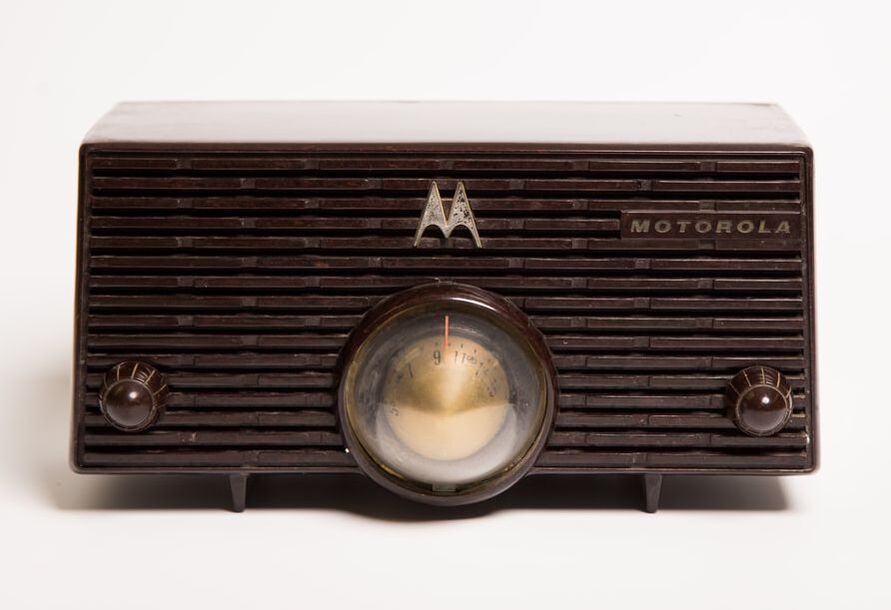1956 Motorola Table Radio
|
MOTAL’s AM radio is a brown bakelite tube radio. Its dimensions are 6 inches high, 12 inches wide, and 5 inches deep, and it has a conical tuning dial. It was produced in the 1950s, at the end of over two decades when radio was a primary source of learning and enjoyment for families who would spend time together listening to news about local and national events, sports, music, variety shows, comedies, and children’s shows.
Donor
MOTAL received its radio as a donation from Harold H. Horn in 2006. Mr. Horn’s family enjoyed listening to it in their kitchen. |
Brief History
In 1893 the inventor Nikolai Tesla demonstrated a wireless radio in St. Louis, Missouri. Despite this demonstration, Guglielmo Marconi is the person most often credited as the father and inventor of the radio, probably for his demonstration of trans-Atlantic broadcasting. Radios were used for military communications during World War I, but after the war, radios for home use began. During the late 1920s Galvin Manufacturing Corporation was started in Chicago by brothers Paul V. and Joseph Galvin. Their first invention allowed radios to use electricity in the house. The radio became essential in the home by the 1930s for listeners to learn about the world during what was called the “Golden Age of Radio.” Galvin Manufacturing continued to create many historic firsts such as car radios and cruiser radios, and they were a respected producer of phonographs, home radios, and two-way radios. Although Paul Galvin created the brand name Motorola, which means “sound in motion,” in 1930, the company waited until 1947 to change its name to Motorola. It continued to create prominent communication devices including the radio transponder on Apollo 11 that started the first communication from the moon in 1969. The company has a rich history of producing a wide variety of innovative and communication devices into the 21st century. The name Motorola lives on, although the company was restructured several times and divisions were sold to other entities such as Google, Nokia, and Lenovo. |
Learn More!
If you would like to learn more about the timeline of legislation and change, we recommend the following:
If you would like to learn more about the timeline of legislation and change, we recommend the following:
- "The History of Radio Technology" by Mary Bellis (May 11, 2019)
- "History of Radio | Kids Work!" by KnowItAll.org
- "Timeline" by MotorolaSolutions.com

